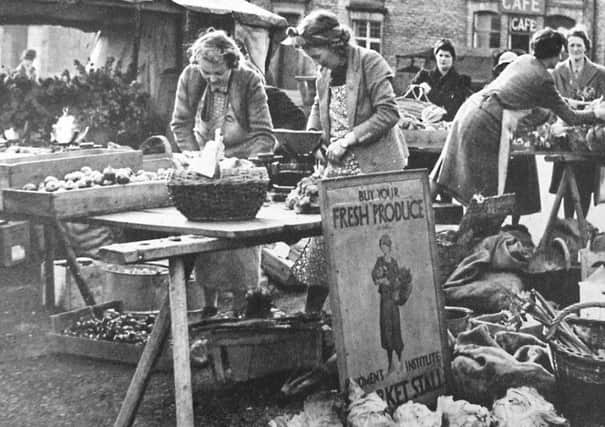What you never knew about the Women’s Institute...


1. The Women’s Institute has its roots a few thousand miles away in Canda.
It might have a reputation for being the most British of organisations, but the very first Women’s Institute actually originated in Ontario, Canada. It was back in 1897, after listening to a talk by educational reformer Adelaide Hoodless that farmers Janet and Erland Lee set up the organisation. The idea was to bring women together from different communities to teach them about childcare, controlling family budgets and some aspects of farming.
Advertisement
Hide AdAdvertisement
Hide Ad2. Best-known today for its baking, during the First World War, the WI was at the forefront of the allotment movement.
It was a need for vegetables which saw the arrival of the WI in Britain. In 1915, with the country at war, the first branch of the organisation was set up to encourage women to help the home front’s efforts by growing their own food. With sponsorship from the Agricultural Organisation Society, the first meeting of the British WI was held on September 16 in a garden shed on Anglesey.
It might not have been the most glamorous of starts, but by the end of the year, another 40 branches had opened across the country and by early the following year the number had risen to 137. By the end of the First World War, there were 199 active branches and with the country in economic crisis by the end of the decade the figure had shot up to 1,405.
3. The WI was instrumental in putting the issue of child poverty on the political agenda
Advertisement
Hide AdAdvertisement
Hide AdDuring the Second World War, the WI was as equally proactive as it had been during the Great War. A survey was carried out among its rural members who were housing child evacuees from towns and cities and the results were stark. When the resulting report showed that some of the youngsters were malnourished, unclean and in poor health it prompted a national debate about child poverty and after the end of the war, it eventually led to the setting up of family allowances to help those most in need.
4. In the 1970s, a decade known for the three-day week and the Winter of Discontent, the WI was at the centre of the great jam debate.
It’s a truth universally acknowledged that only a fool would try to get between the WI and its jam-making. It was something local authorities learned to their cost in 1979. Prior to then, WI members were forced to register their kitchens with their council in order to be able to sell jam to the public.
The bureaucracy was frustrating and as various leading WI stalwarts argued, wholly unnecessary. The organisation called for an immediate reform of the law and while their lobbying sparked what was known as the ‘great jam debate’, the powers that be soon backed down.
Advertisement
Hide AdAdvertisement
Hide Ad5. Before the British government appeared to grasp the extent of the Aids crisis, the WI was leading the campaign for more information.
Remember 1986? That was the year that Aids became headline news. Back then there was no known cure for the disease and the tabloids were full of scare stories about how it could be caught and who was most at risk.
Before the government finally grasped the scale of the problem, spending millions on an advertising campaign featuring apocalyptic images of icebergs and crumbling mountains and a chilling commentary courtesy of John Hurt, the WI had already beat them to it.
The organisation had been campaigning for months for better public education to prevent the rumour mill going into overdrive.